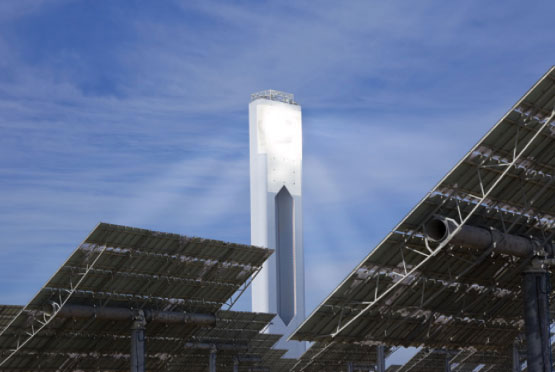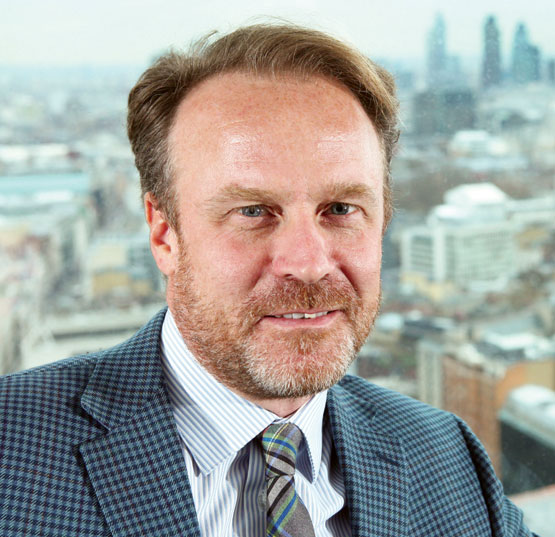Here Comes The Sun

If Kevin Sara ’82 is successful—and there’s good reason to believe he will be—he’ll be responsible for a pioneering renewable energy project: generating solar power in the deserts of North Africa and sending that energy via submarine cable through some of the deepest portions of the Mediterranean to customers in Italy and elsewhere in Europe. It’s a bold plan, but for Sara, pushing the energy technology envelope in this way seems an entirely realistic goal.
It’s clear that the demand for “cleaner” energy is there. Europe is shifting away from nuclear power and seeking to lower carbon emissions by finding alternatives to coal-burning power plants. “People are looking for solutions,” Sara says, with solar and wind chief among them.
Sara had a long and winding career before reaching the renewable energy field. A physics major at Vassar, he was a good writer, who knew his science. (He even built his own computer in high school.)
After returning to college to earn an MBA from ENPC School of International Management in Paris, Sara worked in international finance, mergers and acquisitions, and, finally, the banking sector. “But then the bubble burst,” he recalls.
“I took a step back. At that point, there was more to life than just having prestigious positions and lots of money,” he says. “I wanted to use my skills toward something more meaningful, toward fulfillment in my life.”
Sara gravitated to the issue of global climate change. He began as an angel investor, backing renewable energy companies, but found himself too far on the sidelines. “I wanted to be more active, to roll up my sleeves and get my hands dirty,” he says.
And so he founded Nur Energie, a solar power company focused on the Mediterranean region.
“We take the best ideas in solar technology, build large-scale solar power plants in deserts, then transmit that power for consumption,” Sara says. But banish any thought of the common photovoltaic (PV) panels you’ve likely seen on rooftops and in other solar applications.

“Conventional solar, or PV solar, only produces electricity when the sun is shining,” explains Sara. Yet, “especially in southern Europe and northern Africa, peak consumption is when the sun goes down and people turn the lights on.”
The solution? Concentrated solar power (CSP). CSP projects concentrate a large area of sunlight (or solar thermal energy) onto a small area. They do this with a field of heliostats—mirrors or lenses designed to shift position as the sun arcs across the sky, always bouncing its rays onto the same central point, usually the height of a central tower. The tower’s contents get super-heated, and that heat is stored and used to drive steam engines that generate electricity, day or night. “With solar thermal, since we’re generating the energy by way of heat, we can easily store it,” Sara explains. “Think of a good thermos. It will keep your coffee piping hot. Based on that principle, we’re using molten salt to store the energy and use it to generate steam for electricity later.”
As it turns out, when it comes to generating CSP-type solar power for southern Europe, the best place to do so is in North Africa in places such as Tunisia, where Nur Energie is in the process of constructing a 2,000-megawatt CSP project, one of the largest such projects in the world. That leaves just one nagging problem: getting the power across the Mediterranean Sea.
Sara plans to do this with an eight-inch diameter submarine cable along the sea floor. Similar projects have been done before. Sara points to a cable stretching from Norway to Holland (though Nur Energie’s will be longer) and another from Sardinia to mainland Italy (Nur Energie’s will run deeper). Nur Energie’s solar cable will span some 600km, at depths of up to 2,000m, and will come aground just north of Rome, where the demand and system capacity are greatest.
The media, scientific community, and energy industry are starting to take notice of Nur’s bold plan. Oilprice.com, an energy news website, and Scientific American have recently touted the promise of using clean, renewable North African-based solar power to meet Europe’s energy goals. And Sara now has the endorsement of the nonprofit Desertec Foundation, which promotes sustainable desert-based solar energy as a solution to climate change and energy supply concerns. Sara’s Tunisian CSP project will be an important piece of Desertec’s larger plan to build 100 gigawatts of CSP plants across the region.
Sara has found support among fellow alumni Mutuma Marangu ’84, who sits on Nur Energie’s advisory board (see page 6), and Yannis Vardinoyannis ’84, executive vice president of the Greek petroleum refinery Motor Oil Hellas, who has partnered with Sara and Nur Energie on a large solar project on the island of Crete. All see satisfying the demand for cleaner energy alternatives at a competitive price as worth the effort. And with the focus on renewables, CSP, in particular, seems an attractive option.
“It’s a more reliable option than wind,” Sara says. “The sun will always shine.” Sara just wants to redirect it a little.
